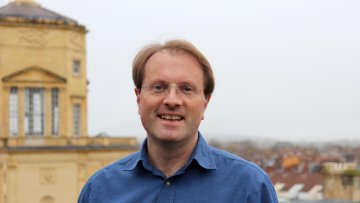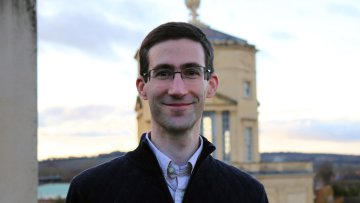Today, two Oxford mathematicians András Juhász and Marc Lackenby published a paper in Nature in collaboration with authors from DeepMind and with Geordie Williamson at the University of Sydney.
14:15
Chow quotients and geometric invariant theoretic quotients for group actions on complex projective varieties
The talk will be both online (Teams) and in person (L5)
Abstract
When a reductive group G acts on a complex projective variety
X, there exist different methods for finding an open G-invariant subset
of X with a geometric quotient (the 'stable locus'), which is a
quasi-projective variety and has a projective completion X//G. Mumford's
geometric invariant theory (GIT) developed in the 1960s provides one way
to do this, given a lift of the action to an ample line bundle on X,
though with no guarantee that the stable locus is not empty. An
alternative approach due to Kapranov and others in the 1990s is to use
Chow varieties to define a 'Chow quotient' X//G. The aim of this talk is
to review the relationship between these constructions for reductive
groups, and to discuss the situation when G is not reductive.
14:15
Quiver varieties and moduli spaces attached to Kleinian singularities
The talk will be both online (Teams) and in person (L5)
Abstract
Let $\Gamma$ be a finite subgroup of $SL(2, \mathbb{C})$. We can attach several different moduli spaces to the action of $\Gamma$ on $\mathbb{C}^2$, and we show how Nakajima's quiver varieties provide constructions of them. The definition of such a quiver variety depends on a stability parameter, and we are especially interested in what happens when this parameter moves into a specific ray in its associated wall-and-chamber structure. Some of the resulting quiver varieties can be understood as moduli spaces of certain framed sheaves on an appropriate stacky compactification of the Kleinian singularity $\mathbb{C}^2/\Gamma$. As a special case, this includes the punctual Hilbert schemes of $\mathbb{C}^2/\Gamma$.
Much of this is joint work with A. Craw, Á. Gyenge, and B. Szendrői.
14:15
Cayley fibrations in the Bryant-Salamon manifolds
Abstract
In 1989, Bryant and Salamon constructed the first Riemannian manifolds with holonomy group $\Spin(7)$. Since a crucial aspect in the study of manifolds with exceptional holonomy regards fibrations through calibrated submanifolds, it is natural to consider such objects on the Bryant-Salamon manifolds.
In this talk, I will describe the construction and the geometry of (possibly singular) Cayley fibrations on each Bryant-Salamon manifold. These will arise from a natural family of structure-preserving $\SU(2)$ actions. The fibres will provide new examples of Cayley submanifolds.
14:15
Nonabelian Hodge theory and the decomposition theorem for 2-CY categories
The talk will be both online (Teams) and in person (L5)
Abstract
Examples of 2CY categories include the category of coherent sheaves on a K3 surface, the category of Higgs bundles, and the category of modules over preprojective algebras or fundamental group algebras of compact Riemann surfaces. Let p:M->N be the morphism from the stack of semistable objects in a 2CY category to the coarse moduli space. I'll explain, using cohomological DT theory, formality in 2CY categories, and structure theorems for good moduli stacks, how to prove a version of the BBDG decomposition theorem for the exceptional direct image of the constant sheaf along p, even though none of the usual conditions for the decomposition theorem apply: p isn't projective or representable, M isn't smooth, the constant mixed Hodge module complex Q_M isn't pure... As an application, I'll explain how this allows us to extend nonabelian Hodge theory to Betti/Dolbeault stacks.



